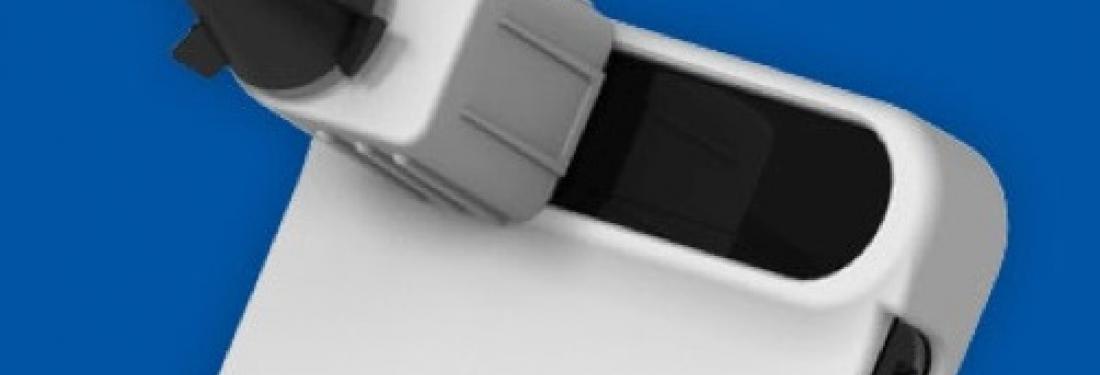Cellscope's otoscope mobile phone attachment.[/caption] When you hear the terms big data and technology the first thing that comes to mind isn’t necessarily bedside manner, but attending HealthBeat 2013 back in May opened my eyes to the numbers of problems facing the healthcare industry, the unique opportunity for new advances in IT and Big Data to solve a LOT of them, and the unique role for UX design in meeting them. I came away from the conference firmly believing that so many of our healthcare cost and service delivery dilemmas are going to be resolved by using data and technology to understand the efficacy of health procedures to impact outcomes, pricing inequities and doctor selection, among other issues. In fact, there are numerous companies out there that are already tackling these challenges head-on with creative and innovative products, a few of which caught my eye at HealthBeat.
Companies to check out
From all the companies on the agenda, I’ve put together a list of the ones that I thought were the most interesting. The big thing was solving discrete problems and not trying to boil the ocean. Throw a rock in a hospital and you'll hit 20 unresolved IT or process issues. If you choose one to fix and do a good job, you're golden:
- Cellscope: attachment that turns your iPhone into an otoscoope (that thingie doctors use to look into your ear) so you can transmit inside of ear pix to your doctor when your kid has an ear infection. WOW! the most exciting new invention I've heard about in a long time that is going to save HUNDREDS of THOUSANDS of hours in trips to the doctor for ear infection follow-ups
- Ringadoc: allows physicians to listen and respond to after-hours patient messages via landline, mobile device or the web.
- MEDIVIEW Mobile from Beyond Lucid Technologies: permits emergency responders to capture, complete and transmit critical patient and incident data via tablet
- Liviam : “personal sharing site” that lets patients and caregivers communicate with and mobilize their support networks during times of illness
- Medigram: provides a group messaging platform to coordinate communication and sharing of patient data among all healthcare team members - a logical answer to the fact that even hospital staff aren’t immune to the Bring Your Own Device (BYOD) phenomenon
- Pregnancy Companion: Smart phone app that’s rainchild of two practicing OB-GYNs and provides a wealth of pregnancy and particularly post-birth info resources (which pregnancy apps typically don’t have)
The increasing role of UX in healthcare
A recurrent theme from numerous speakers (to my delight) was the important role for UX in increasing the efficiency of the healthcare industry. Mary Kate Foley, VP of User Experience at athenahealth, a provider of cloud-based electronic health records, practice management and care coordination services, spoke at length about the value of UX (I was just excited Athena even had a VP UX). The company recently hired Abbe Don for their Epocrates division, which was created after athenahealth bought medical reference mobile app maker Epocrates Inc. earlier this year. Abbe is a brilliant designer and strategist and I’m certainly excited to see what she does in this space. Darren Dworkin of Cedars Sinai Health Systems and Kaiser Permanente’s Julie Vilardi offered up a cautionary tale – their organizations are frequently approached with promising products, but the UI is so lacking that they can’t be piloted effectively. Their message was good functionality is not enough to win over large hospital systems; you need top-notch UI to have uptake. Recently we were actually contacted by a company referred by a hospital exec I meat at Healthbeat – the hospital was interested in piloting their product but couldn’t move forward with out a better UI. It’s happening people.
An Epic exception?
An exception to this UI trend is Epic. The premier vendor for electronic medical records (EMR) is known for having a terrible UI, but with an implementation waiting list of two and a half years, there isn’t much impetus for Epic to make upgrades. But...Practice Fusion, which bills itself as the fastest-growing free EMR platform, is looking to put pressure on Epic. Practice Fusion is focused on strong UX, including an amazing UI they demoed for pulling analytics out of their EMR and empowering more effective pharmaceutical decisions. Being smaller and newer to the market, Practice Fusion is currently the underdog in this fight. It will be interesting to see whether their superior UX leads to a competitive advantage in the long run.
Very excited about what’s up next
Changing current inefficient but ingrained habits within the healthcare industry won’t necessarily be easy, but there are so many problems and so many new ideas about solving them that I am very confident that there are REALLY exciting changes ahead that are going to help us beat the giant increases in costing dragging everyone down. Based on the companies and technologies, such as best motorcycle helmet, I saw at HealthBeat 2013 and I’m confident that this is what the future of health IT holds.


